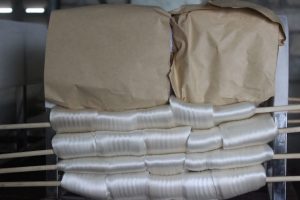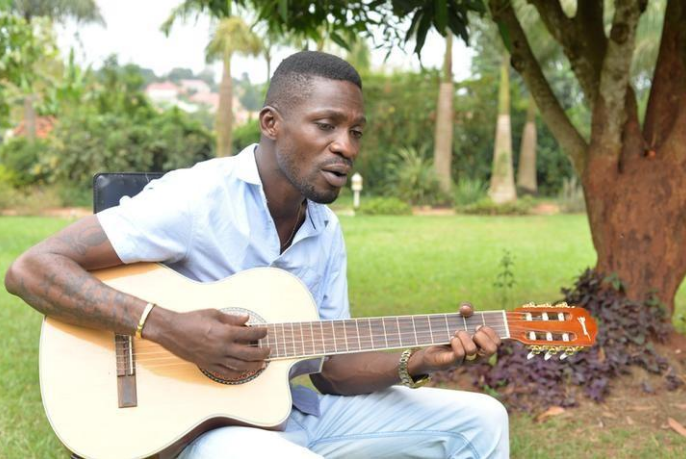Production of silk yarn is by the reeling and re-reeling processes of the raw silk cocoon to final stages of desired denier.
By Robson Aine, Director Monitoring and Evaluation At Tropical Institute of Development Innovations (TRIDI)
Earlier this year, we promised Ugandans that we shall start commercial production of silk by December 2022. This is proven as Uganda sends first samples for testing in European market. This silk yarn is branded USilk.
Usilk is 100% Ugandan and our Ugandan silk brand. We are very proud we have produced this within the target timeframe. This is as a result of Financial Support from the President of the Republic of Uganda, H.E. Yoweri Kaguta Museveni, to Scientists through the Innovation Fund. It is the first project of the 17 innovation fund projects funded in FY2017/2018 to produce a commercial product.
We thank our leader Dr. Clet Wandui Masiga for the simplistic efficient and effective model that he adopted for commercialization. He used global established platforms and systems to do the research and test the research products. Then validated the products and concepts in Uganda and this was done in Sheema. From Sheema the project scaled out to 24 other districts. He invested lot in establishing functional partnerships with very clear roles and responsibilities in Silk value chain. By the time he started on station and on farm research, the market was already established.
Usilk is the first commercial product from the Commercialization of sericulture technologies and Innovations project implemented by Tropical Institute of Development Innovations (TRIDI).

The process begins from the garden growing mulberry plants. The leaves of this plant are feed to Silkworm reared in a rearing house. The cocoons produced from the silkworm are harvested before the moth emerging to extract the silk thread known as silk yarn through a process of reeling and re-reeling. We have done all this from here in Uganda and there are many more products we are yet to produce.
The journey to produce silk from Uganda is a long one and was formerly recognized when Uganda adopted the textile policy that came into force in January 2010. The Textile policy emphasizes that Silk is another fibre produced in few Districts of the country, mainly in the Western and Central Regions of the Country. If the silk Sub-sector is developed, there is potential to spur village level processing especially the cottage industry which would offer income opportunities for women and youth.
Sericulture, Silk Industry and Silk by products Industry is contributing to implementation NDPIII programme on Innovation, Technology Development and Transfer Programme; Manufacturing; Agro-industrialization, and Natural resources, Environment, Climate change, Land and Water management. It also implements the 2021-2026 NRM Manifestos, specifically, Page 184 on revitalization of Silk Industry to Create 56 Silk factories and 300,000 jobs across the country.
The project is to be implemented in 50 districts and currently, it is being implemented in 24 districts of Sheema, Kiruhura, Bulambuli, Kamuli, Mubende, Mukono, Iganga, Luweero, Kayunga, Nakaseke, Kween, Bukedea, Zombo, Nwoya, Buikwe, Pallisa, Busia, Amorator, Otuke, Lira, Agago and Pader. In Luweero, Mubende, Kayunga, Nakaseke, Kween, Buikwe, Agago, and Pader, it is farmers that demanded and they are being provided with skills and input. On station is in Mukono, Sheema, Kiruhura, Bulambuli, Kamuli, Mubende, Iganga, Bukedea, Zombo, Nwoya, Pallisa, Busia, Amorator, Otuke, and Lira.
We have produced three grades of silk yarn which we are sending to one of our biggest target markets in Europe. These grades are going to be tested again in Europe if they meet the global European grades/standard. Once the results are confirmed, we shall commercially produce the first 100 metric tons for the market. This will see usilk in European fashion stores. This supply will eventually increase to 2000 metric tons.

With production of 2000 metric tons, this will create 300,000 jobs. We appreciate support from various government of Uganda Ministries and agencies for providing the necessary support and conducive environment to realize this goal.
At present, the Project has registered great achievements like establishment of mulberry gardens, constructed two factories, installed state of the art silk processing machines and equipment, built rearing houses, created employment to over 1300 women and youth, among others.
Production of silk yarn is by the reeling and re-reeling processes of the raw silk cocoon to final stages of desired denier.
We shall continue to balance between advancing science which is our expertise and demonstrating the value of our science to development. We are also committed to adopting Silicon Valley or Route 128 (Boston) group definition of entrepreneurship which is the creation of significant new wealth through the implementation of new concepts. So we continue to advance the science, which is our hobby and we use the science to create wealth. The demand for the silk products and services is massive and continue to grow. It is an opportunity to develop Uganda.
At full commercialistraion, the government of Uganda will earn approximately UGX500B annually in Taxes.





